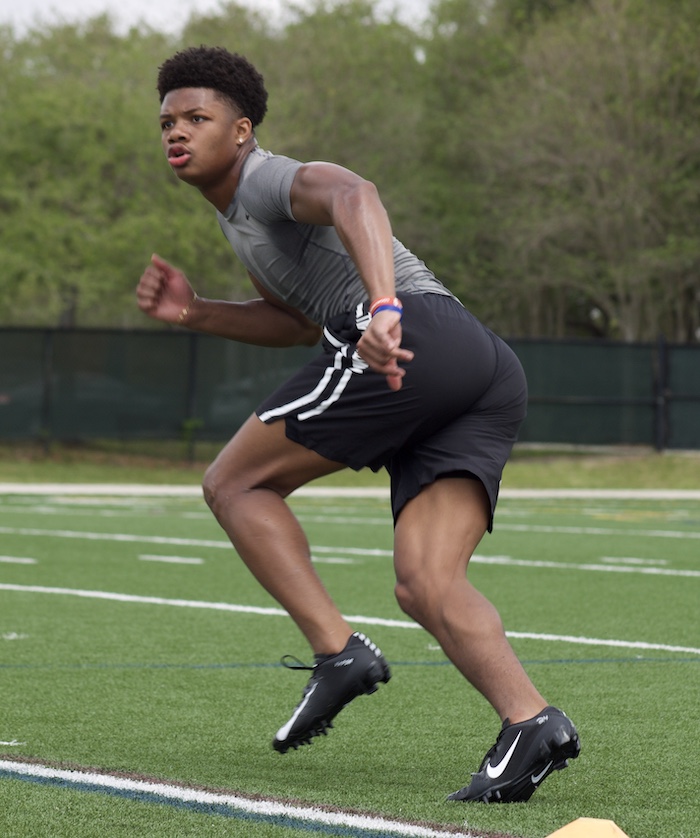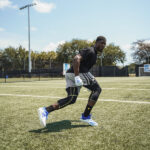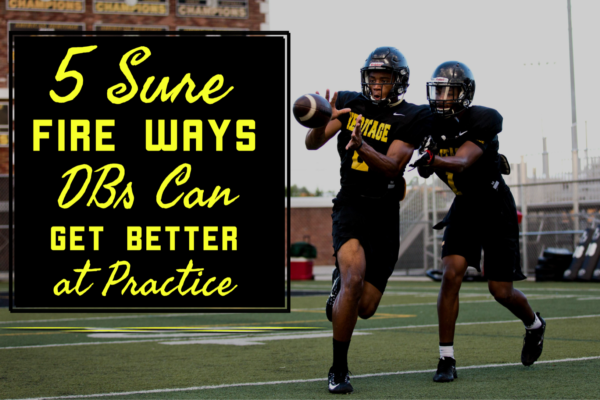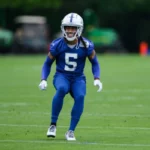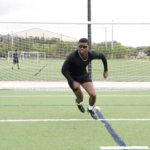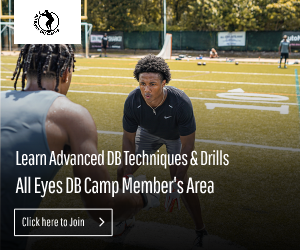Body control is a must for defense of backs that are looking to stay in and or around the wide receiver that they are covering. This also applies to guys that are trying to be in the proper area in zone coverage when the ball is thrown. To do this there is one simple thing that a defensive back must do.
Now that I have you hooked in, it’s time to talk about how we control our body out on the field. If you have ever been to a training session with me you have no doubt heard me say stay in your circle. It’s a reference to the game Madden and the tight circle that is around the player that you are controlling on screen. It is typical for defensive backs that are surprised by a sudden change to have their foot work go awry. Typically, going awry means the defensive back will take wide steps and put himself at a physical disadvantage.
We already know what the deal is when we’re playing defense. The wide receiver knows where he is going and we do not. If you have carefully studied wide receivers, the majority of them are able to have a good balance and drive when they are running their routes. This is due in large part to them knowing exactly where it is they want to go and because of this they can anticipate the steps they need to take. As defensive backs, we do not have this luxury. So when we are greeted with a directional change it is usually on an emergency notice.
Sudden change can lead to a breakdown in technique. For defensive backs that usually starts with the eyes and quickly gravitates to the feet. The major reason why we slip coming out of our breaks is because our feet are landing in the wrong spot in relation to our upper body. When a defensive back sets his feet wide and away from his center of gravity he puts himself at risk to slip. Furthermore, the further away his foot lands away from his center of gravity, the less power he will have in his plant and subsequent push towards the direction he would like to travel. Explosive movement occurs when the foot lands under the hips and can propel the body forward.
Now that we know where the feet need to land, we must now make plans to have this happen without us thinking about it. Remember, our change of direction typically comes at moment’s notice and as part of a reaction to what a receiver is doing. Our natural reaction is going to be to spread our feet apart. We do this because we think it will prepare us for anything. One foot put far to the left and the other foot put far to the right makes us feel like we’d be ready to go in either direction. The truth is that doing that puts us in a poor position to go either way.
For us to adopt the skill of planting under our hips whenever we need to make a sudden change we must rep it over and over again. By doing something repeatedly, we hardwire it into our brains. Once it’s hardwired into our brains it becomes difficult to do it any other way. This is essential because while we are playing the game we are focused on either a receiver or a quarterback. When it comes time for us to react to what the opposition is doing, we will revert to what is hardwired in our brain. If spreading our feet wide apart is what we have done the most leading up to that moment then that is what we’ll do. However, if through hours of practice, we have learned to place our feet in our circle underneath our hips then that is what will occur when we are required to change at a moment’s notice.
So, in closing, staying in your circle means planting your feet under your hips and within the tight circle around you similar to the circle that is found around a Madden player in your favorite game on PlayStation. Keep that visual in your mind as you practice your drills over and over. Soon you’ll find yourself taking the proper steps, getting good plants and great drives towards the ball. It’s only a matter of time before that ball finds itself in your hands on a regular basis.
Chad Wilson is the owner of All Eyes DB Camp and author of "101 DB Tips". He played college football at the University of Miami and briefly in the NFL for the Seattle Seahawks. Over his 15 year high school football coaching career, he tutored over a dozen Division I defensive backs and as a trainer has worked with NFL All Pros, first round draft picks, college football All Americans and Top 10 ranked high school football prospects.

